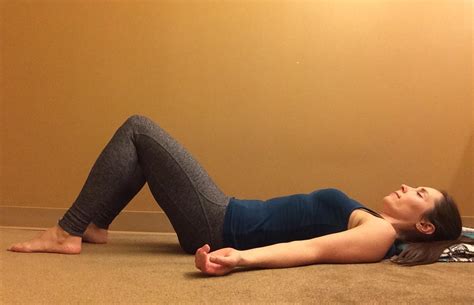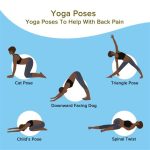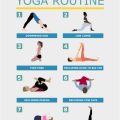Essential Yoga Rest Poses: A Comprehensive Guide for Beginners and Experts
Yoga, often perceived as a demanding physical practice, includes essential resting postures that rejuvenate the body and mind. These yoga rest poses are not mere pauses but fundamental components for restoration and reflection. Whether you’re a beginner exploring the benefits of yoga or a seasoned practitioner looking to deepen your practice, understanding these poses is critical. This guide explores key rest poses in yoga, delving into their historical context, practical applications, and benefits.
Introduction: The Importance of Rest in Yoga
In any well-rounded yoga practice, rest is just as important as activity. These poses allow the practitioner to absorb the benefits of the active practice while promoting healing and mental clarity. Unfortunately, many practitioners, especially those new to yoga, often overlook the significance of restorative postures. This article not only highlights essential yoga rest poses but also explains their role in achieving balance, improving flexibility, and enhancing mental focus.
Key Concepts: What Defines a Yoga Rest Pose?
Rest poses in yoga are often mistaken for breaks between more active sequences. In reality, these postures serve multiple functions such as grounding, reducing muscular tension, and calming the nervous system. Here are some essential aspects that define rest poses:
- Restorative Nature: Unlike active poses, rest poses emphasize stillness and inner reflection.
- Muscle Relaxation: The primary goal is to release tension rather than stretch or build strength.
- Deep Breathing: Many rest poses encourage practitioners to focus on pranayama (breath control) to further relax the body.
- Mind-Body Connection: Rest poses help in reinforcing awareness of the mind-body connection.
Historical Context of Rest Poses in Yoga
Historically, restorative yoga is rooted in the Hatha Yoga Pradipika, one of the foundational texts on yoga. While modern yoga often emphasizes more dynamic sequences, ancient yoga traditions highlighted balance between action and rest. Shavasana (corpse pose) has been revered for centuries as a pose of ultimate relaxation, used to integrate the benefits of the practice.
The rise of restorative yoga in the late 20th century, spearheaded by B.K.S. Iyengar and later teachers like Judith Lasater, brought a resurgence of interest in these restful postures. These modern adaptations focus on therapeutic applications, helping practitioners recover from physical injuries and mental stress.
Current State Analysis: The Role of Rest in Modern Yoga Practices
In today’s fast-paced world, the value of rest poses has never been more crucial. Yoga studios and practitioners alike are increasingly incorporating these poses into classes as a means to counterbalance active lifestyles. While many yoga sessions emphasize movement and flow, rest poses provide the necessary counterpoint to enable full physical and mental recovery.
Practical Applications of Yoga Rest Poses
Yoga rest poses can be used in various contexts to improve well-being. These are some of the most common applications:
| Application | Description | Example Pose |
|---|---|---|
| Post-Workout Recovery | Relaxes the muscles and reduces post-exercise soreness. | Shavasana (Corpse Pose) |
| Stress Relief | Calms the nervous system and promotes relaxation. | Balasana (Child’s Pose) |
| Sleep Aid | Encourages deeper, more restful sleep by winding down the body. | Supta Baddha Konasana (Reclining Bound Angle Pose) |
| Mental Clarity | Promotes mindfulness and resets the mind after a demanding sequence. | Sukasana (Easy Pose) |
| Healing and Recovery | Supports physical healing, particularly after injuries or illness. | Viparita Karani (Legs Up the Wall Pose) |
Case Studies: Rest Poses in Action
Case studies highlight the efficacy of yoga rest poses in both clinical and personal settings:
- Case Study 1: Post-Surgery Recovery – A 45-year-old woman used Viparita Karani to aid her recovery after knee surgery. Over three months, the practice significantly reduced swelling and helped regain flexibility.
- Case Study 2: Anxiety Management – A 30-year-old man with a history of anxiety found Supta Baddha Konasana an effective tool to manage symptoms of panic attacks. Consistent practice helped regulate his nervous system.
- Case Study 3: Corporate Wellness Program – A company introduced yoga sessions featuring rest poses during lunch breaks. Over six months, employees reported a 25% reduction in stress levels.
Stakeholder Analysis: Who Benefits from Yoga Rest Poses?
Rest poses offer benefits to a diverse range of stakeholders:
| Stakeholder | Benefits |
|---|---|
| Beginners | Helps acclimate the body to yoga practice and avoid overexertion. |
| Experienced Yogis | Allows deeper meditation and introspection, balancing the physical practice. |
| Injured Individuals | Promotes healing and recovery without straining the body. |
| Stress-Prone Individuals | Encourages relaxation and helps manage mental health. |
| Yoga Teachers | Enhances class structure by providing balance between active and passive poses. |
Implementation Guidelines for Yoga Rest Poses
For effective implementation, yoga rest poses should be incorporated strategically:
- Sequence Integration: Insert rest poses between demanding sequences to allow recovery.
- Time Allotment: Each rest pose should be held for at least 3-5 minutes to reap the full benefits.
- Use of Props: Support the body with props like bolsters and blankets to enhance relaxation.
- Guided Relaxation: Provide verbal cues for deep breathing and relaxation during these poses.
Ethical Considerations in Restorative Yoga
Though yoga rest poses are inherently gentle, they can still pose ethical concerns in terms of accessibility and inclusivity. For instance, some individuals may feel discomfort or strain due to physical limitations. It’s essential for yoga instructors to offer modifications and be mindful of students’ unique needs.
Limitations and Future Research in Restorative Yoga
While there is growing interest in restorative yoga and its benefits, more research is needed, particularly regarding its long-term effects on mental health, chronic pain management, and its integration into corporate wellness programs. Furthermore, there are gaps in understanding how these poses affect populations with specific medical conditions.
Current limitations include the underrepresentation of marginalized groups in yoga research and the need for more rigorous, evidence-based studies to validate the efficacy of rest poses for chronic illnesses and mental health disorders. Future research should address these gaps by conducting longitudinal studies across diverse populations.
Expert Commentary
In summary, yoga rest poses are integral to achieving a balanced, holistic yoga practice. Experts agree that these postures, though often understated, provide critical benefits for both physical and mental well-being. By incorporating rest poses into a regular yoga routine, practitioners of all levels can enjoy greater flexibility, mental clarity, and overall relaxation. With more research and wider adoption, the therapeutic potential of these poses could become a cornerstone in managing stress and fostering recovery in our increasingly busy lives.








